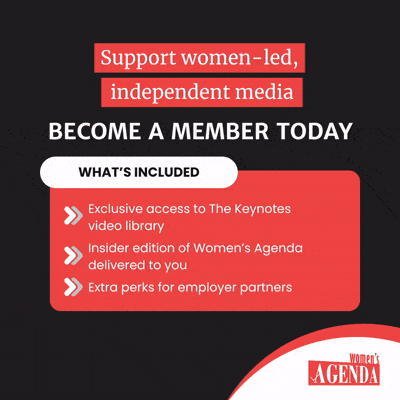Today, UN Women will launch its global report Progress of the World’s Women: Transforming Economies, calling for governments around the world to develop workforce participation strategies that will ensure that more decent jobs are created for women. Here, executive director Julie McKay says Australia has work to do.
Last year, under Australia’s leadership, G20 leaders committed to closing the workforce participation gap between men and women by 25% by 2025.
This landmark commitment recognised the opportunity that women’s workforce participation presents around the world and the damage that continued underutilisation was having on global growth and the perpetuation of gender inequality.
The National Committee for UN Women is calling for the Government to develop a National Women’s Workforce Participation Strategy and Implementation Plan to ensure that commitments made on women’s workforce participation are mapped, met and measured.
Around the world, women and girls continue to be vulnerable, experiencing poverty at higher rates than men and boys. The International Labour Organisation estimates that the Asia and Pacific region is losing between $42 and $47 billion annually because of women’s limited access to employment opportunities. In Australia, women continue to earn less than men and make up the majority of part-time and vulnerable workers. Women are also over-represented in low-paying sectors such as childcare and retail.
This year, the United Nations marks the 20th Anniversary of the Beijing Platform for Action – arguably the most progressive roadmap for gender equality that has ever been drafted. Twenty years ago in Beijing, Member States (including Australia) committed to taking steps to ensure that women had equal access to decent work and were not disadvantaged by stereotypes or biology. Despite this, since 1990, overall workforce participation for women aged 35-44 has barely changed in Australia and the pay gap persists at 18%.
Meeting the target of a 25% reduction in the workforce participation gap between men and women in Australia, equates to a 3% increase in women’s workforce participation. Between 1995-2005, women’s workforce participation increased by this amount. However, it slowed to 2.4% in the last decade and in the last five years, only a 0.1% increase was recorded. This trend indicates that the ‘wait and see’ approach to women’s participation is not going to see Australia reach the G20 commitment, and that a National Women’s Workforce Participation Strategy is needed.
In recent years, many policies have been explored – subsidised childcare, a variety of parental payments and most recently paid parental leave have been considered in attempts to support women to balance work and family responsibilities. Today’s report is a timely reminder that we must recognise that no individual policy response will solve this problem. Instead, a strategy which seeks to outline the key barriers to women’s full participation and offers actions to overcome these, is necessary.
To enable women’s workforce participation, fundamental shifts in the perception of ‘women’s roles’ and changes to the structure of work will be required. Sex discrimination is alive and well in Australian workforces where employers continue to make assumptions about the types of jobs and career paths that are suitable for women and these assumptions continue to influence decisions about job applicants and existing employees.
In 2015, it is unacceptable that women are still expected to be the primary carers of children, undertake the vast majority of household work and somehow manage to earn an income at the same time. To attract and retain the best talent, employers will increasingly need to support flexible work, which enables people to balance paid and unpaid work commitments.
A broader range of affordable childcare options should be accessible to parents – including long day care centres and at-home care. Greater awareness about pregnancy discrimination, which continues to affect 1 in 2 workers in Australia is also needed. Linked to this, is the issue of parental leave – which needs to be shared between men and women to ensure that women are not penalised for a life spent caring.
Progress of the World’s Women is a reminder that progress in Australia and around the world has been too slow.
A targeted National Strategy which considers the complexity of gender equality, of women’s participation at work and of the structural and attitudinal changes needed to enable this is urgently needed.
Australia has already shown great leadership on this issue, encouraging G20 leaders to make specific commitments to closing the workforce participation gap by 2025. The next step is to develop a targeted strategy which enables Australia to meet its commitment by moving just over 250,000 more women into the workforce by 2025 and realising the full economic opportunity of doing so.
Progress of the World’s Women: Transforming Economies, Realizing Rights is available online.

